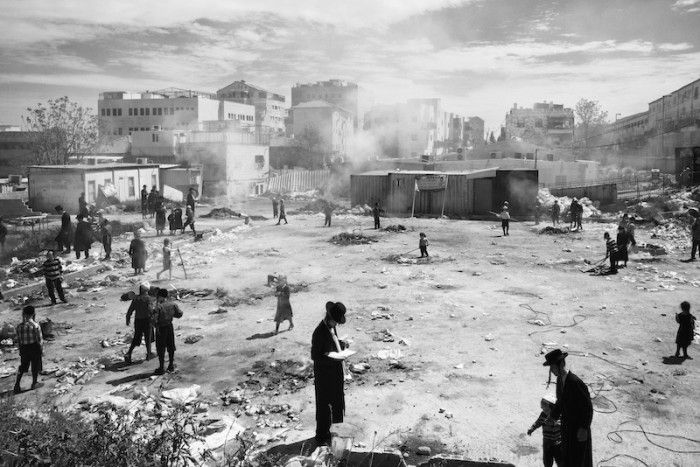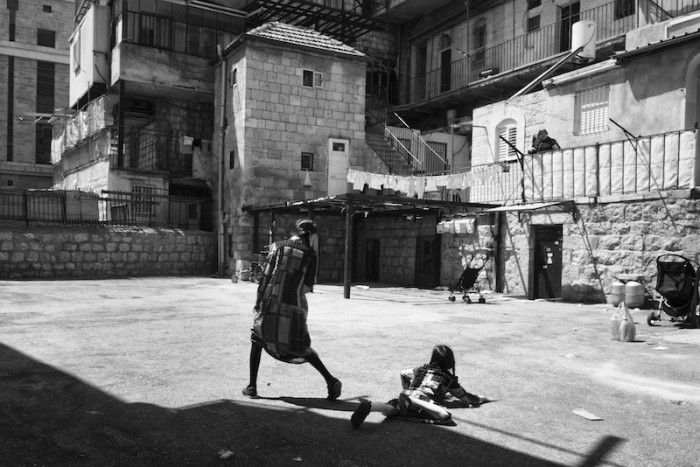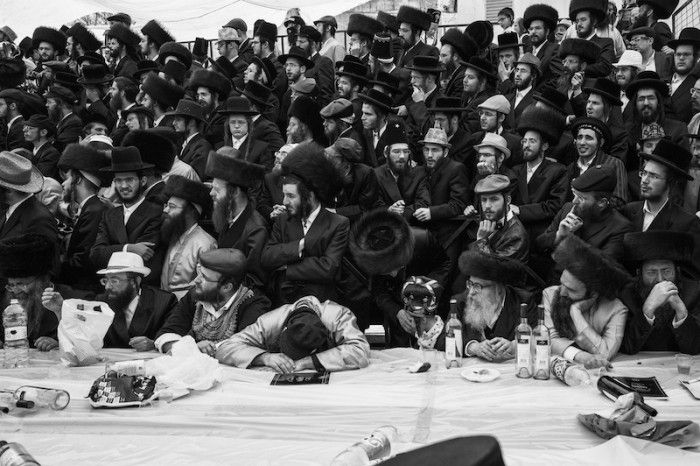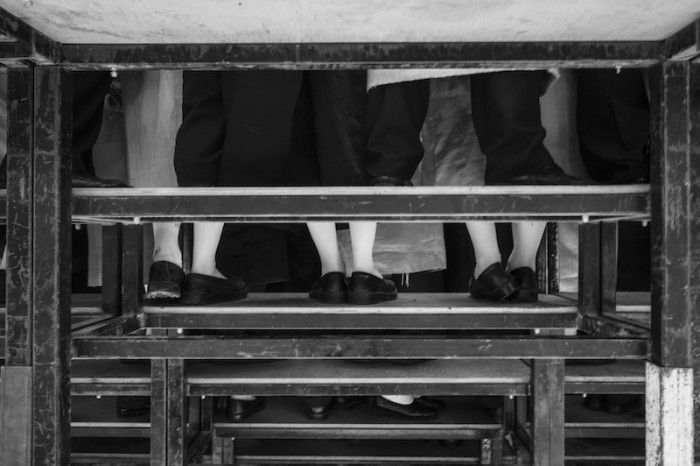blog
Interview with photographer Ofir Barak
 F-Stop Magazine: The “Where I Live” issue of F-Stop Magazine features your project “Mea Sharim”, can you tell us about this project? What led to this project?
F-Stop Magazine: The “Where I Live” issue of F-Stop Magazine features your project “Mea Sharim”, can you tell us about this project? What led to this project?
Ofir Barak: Mea Shearim was established in 1874 as the fifth settlement outside the walls of the Old City of Jerusalem. Its name is derived from a verse in the weekly Torah portion that was read the week the settlement was founded: “Isaac sowed in that land, and in that year he reaped a hundredfold (שערים מאה, Mea Shearim); God had blessed him” (Genesis 26:12). Today, Mea Shearim remains an insular neighborhood in the heart of Jerusalem with its overwhelmingly Hasidic population. Life revolves around strict adherence to Jewish law, prayer, and the study of Jewish religious texts.
The sights that I witnessed during my initial visits to this area were different from anything that I’d ever seen, because the residents resembled one another so strongly. Traditions in dress code for men include black frock coats and black hats. Long, black beards cover their faces, and many grow side curls, called payots. Women and girls are urged to wear what is considered modest dress – knee-length or longer skirts, no plunging necklines or midriff tops, and no sleeveless blouses or bare shoulders. Some women wear thick black stockings all year long, even in summer, and married women wear a variety of hair coverings, from wigs to head scarves. The residents speak Yiddish in their daily lives, as opposed to the Hebrew language spoken by the majority of Israel’s population. The only use of Hebrew for residents is in prayer and religious study, as they believe that Hebrew is a sacred language to be used only for religious purposes. This area has a lot of contradictions even today and there is an ongoing pursuit of the old versus the new. One can say it is the past versus the present. It is basically a city within a city.
I began documenting Mea Shearim in early 2014 after returning to Israel from the U.S. During the time I spent there I learned a lot about photography and once returning I had an idea in mind of what I wanted to create.
F-Stop: How do you prepare for a project, can you elaborate on your creative process ?
OB: I think the most important thing I have learned is to think in a series of frames and not in a single frame when doing a project. It is very easy to take one picture of a theme but when you have to take a few pictures of the same theme its quite different and challenging.
I advise also to set a time frame for a project. A time frame helps you put a starting point and a finishing point for the theme. A finishing point is very important because sometimes you can just get caught up and don’t want to let go.After that you have set those, you have to keep in mind your commitment to the project and push yourself to go out there and shoot, no matter the weather – summer or winter. It would be important to show different situations of the same subject / idea. After that, I assume the rest will present itself as the photographer will move forward.
 F-Stop: How do you choose what to photograph and when, what are you looking to capture?
F-Stop: How do you choose what to photograph and when, what are you looking to capture?
OB: I usually try to capture what interests me and to capture the everyday goings on of their life without disturbing them. We are living in a digital age when every camera is intrusive and people are fearing for their privacy. I found that in the holidays people are more relaxed and less care about the camera so a large part of my work there is being made around those days.
F-Stop: What do you hope people see or perhaps learn when they look at your photographs?
OB: I hope people can see, feel and even smell the area I’m shooting. I hope it triggers in them something and makes them think. There are times when I show my friends or family a photo and they immediately start sharing a story with me, they may have seen or recognized something familiar there and it triggers them. That is what I love about photography that in each person it may result in a different emotional response.
 F-Stop: Do you have a favorite image in this series? If so, which one and why is it the image that speaks to you most?
F-Stop: Do you have a favorite image in this series? If so, which one and why is it the image that speaks to you most?
OB: A lot of the times, a photographer connects the images he took to the experiences he had during the shoot – how was he feeling that day, how was the weather and so on. I have a lot of pictures that I consider favorites but only one that I hold dearest – It was the first picture I took of this series. The picture is of a jewish beggar asking for charity at night – He had a white beard that indicated his age and his had was reached for the people walking by. I hold this one so strongly because this is the last picture I showed to my late grandmother. I was by her bed in the ER of “hadassa” hospital, and I told her I went to Mea Sharim to start a project. After she saw it she told me she really liked it and said it was very different from everything I have done at that time. Sadly, she was ill and passed away the next day.
I can honestly say its not a great picture – I didn’t focus well on him when I was passing him by and the picture came a bit blurred, but every time I look at it, I can remember that moment I shared with her and it brings me joy.
F-Stop: Are you working on any other projects currently?
OB: I still have a year or so for “Mea Shearim” and while I’m working on a project I try to concentrate only on it. Even though, sometimes halfway through I start to wonder what can I do next or how else can I reinvent myself. I have a few ideas about that and one of them is to follow the Christen religion and document it, I have a few monasteries and churches around my area and I think that could be a different angle on religion. Maybe I would turn it into a multiple project that includes all major three religions – Judaism, Christianity and Islam.
 F-Stop: What photographers or other artists inspire you?
F-Stop: What photographers or other artists inspire you?
OB: I would have to say that the late Garry Winogrand was the most influential photographer in shaping my perspective. I hadn’t heard of him until 2014, when I visited Washington D.C. and went to one of the museums there. I just strolled through the galleries and by mistake I entered the exhibition from the wrong side – from where the people exit. I didn’t know who the photographer was that took all these great pictures. I had an epiphany there that this is what I want to do. I spent two hours at the gallery but realized after a while I just couldn’t consume it all at once and eventually I went back there three more times. There was a small screening room with his famous talk at the Rice University, I took a notebook with me and sat at the corner of the room and write myself small anecdotes of what I want to achieve and how to while he talked. George Bernard Shaw once said that Life isn’t about finding yourself its about creating yourself, and I think I found and created myself in that small corner of the gallery room… with Garry Winorgrand by my side.
To see more of Ofir Barak’s work: www.ofirbarak.com
Location: Online Type: Featured Photographer, Interview
Events by Location
Post Categories
Tags
- Abstract
- Alternative process
- Architecture
- Archives
- Artist residency
- Artist Talk
- Biennial
- Black and White
- Book Fair
- Car culture
- Charity
- Childhood
- Children
- Cities
- Collaboration
- Community
- Cyanotype
- Documentary
- Environment
- Event
- Exhibition
- Faith
- Family
- Fashion
- Festival
- Film Review
- Food
- Friendship
- FStop20th
- Gender
- Gun Culture
- Habitat
- home
- journal
- Landscapes
- Lecture
- Love
- Masculinity
- Mental Health
- Migration
- Museums
- Music
- Nature
- Night
- nuclear
- Photomontage
- Plants
- Podcast
- Portraits
- Prairies
- Religion
- River
- Still Life
- Street Photography
- Tourism
- UFO
- Water
- Zine

Leave a Reply